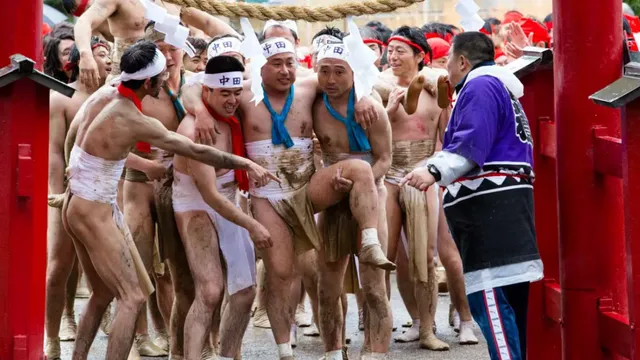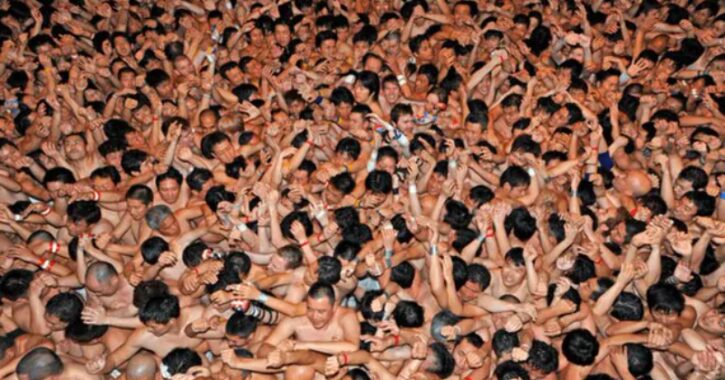Last dance for Japan’s 1,000-year-old naked men festival
This annual event, deeply rooted in cultural significance, has become increasingly challenging to organize due to the country's aging population

The Sominsai Naked Men festival in Japan’s Iwate region, renowned for its centuries-old tradition of naked men grappling over wooden talismans, recently celebrated what might be its final occurrence. This annual event, deeply rooted in cultural significance, has become increasingly challenging to organize due to the country’s aging population.
Over the years, the Sominsai festival has attracted hundreds of participants and thousands of spectators, culminating in fervent cries of “jasso, joyasa” (“evil, be gone”). However, with Japan’s rural communities grappling with the effects of an aging population, particularly on the elderly who typically organize such events, the future of this cherished tradition has been cast into doubt.
Daigo Fujinami, a resident monk at the temple where the festival takes place, expressed the difficulty of maintaining an event of such scale amidst Japan’s demographic challenges. Established in 729 AD, the temple has been a custodian of this ancient tradition, but the realities of an aging population have taken a toll on its continuity.

The Sominsai festival has not been immune to the broader impacts of Japan’s demographic shifts. The closure of schools, shops, and services in rural areas has further compounded the challenges faced by organizers. This trend reflects a broader pattern of social and economic changes sweeping across Japan’s countryside.
Originally spanning from the seventh day of the Lunar New Year until the following morning, the festival underwent modifications due to the COVID-19 pandemic. Despite these adaptations, the recent iteration of the event still managed to draw a significant crowd, underscoring its enduring appeal despite the odds.
The essence of the Sominsai festival remained intact even amidst changes and challenges. Men, clad in white loincloths, continued to ascend the mountainous terrain to reach the temple, engaging in ritual baths in a nearby creek as part of the age-old tradition. The spirited chants of “jasso joyasa” reverberated through the air, underscoring the festival’s spiritual significance.
Local residents, deeply invested in preserving their cultural heritage, expressed a collective determination to uphold the tradition of the Sominsai festival. Toshiaki Kikuchi, one such resident involved in organizing the event, emphasized the importance of maintaining the tradition even in the face of adversity.
However, the conclusion of the recent festival stirred mixed emotions among attendees and spectators alike. For many, it was a poignant reminder of the passing of a tradition that had endured for over a millennium. Participants expressed a sense of privilege in being part of the festival’s final iteration, cherishing the memories created over the years.
The Sominsai festival is not an isolated case; several other festivals across Japan are also grappling with the need to adapt to shifting social customs and demographics. As the country’s population continues to age, the preservation of cultural traditions becomes increasingly challenging, necessitating innovative approaches to ensure their survival.
You might also be interested in – Women join Japan’s historic Naked Man Festival, breaking tradition



